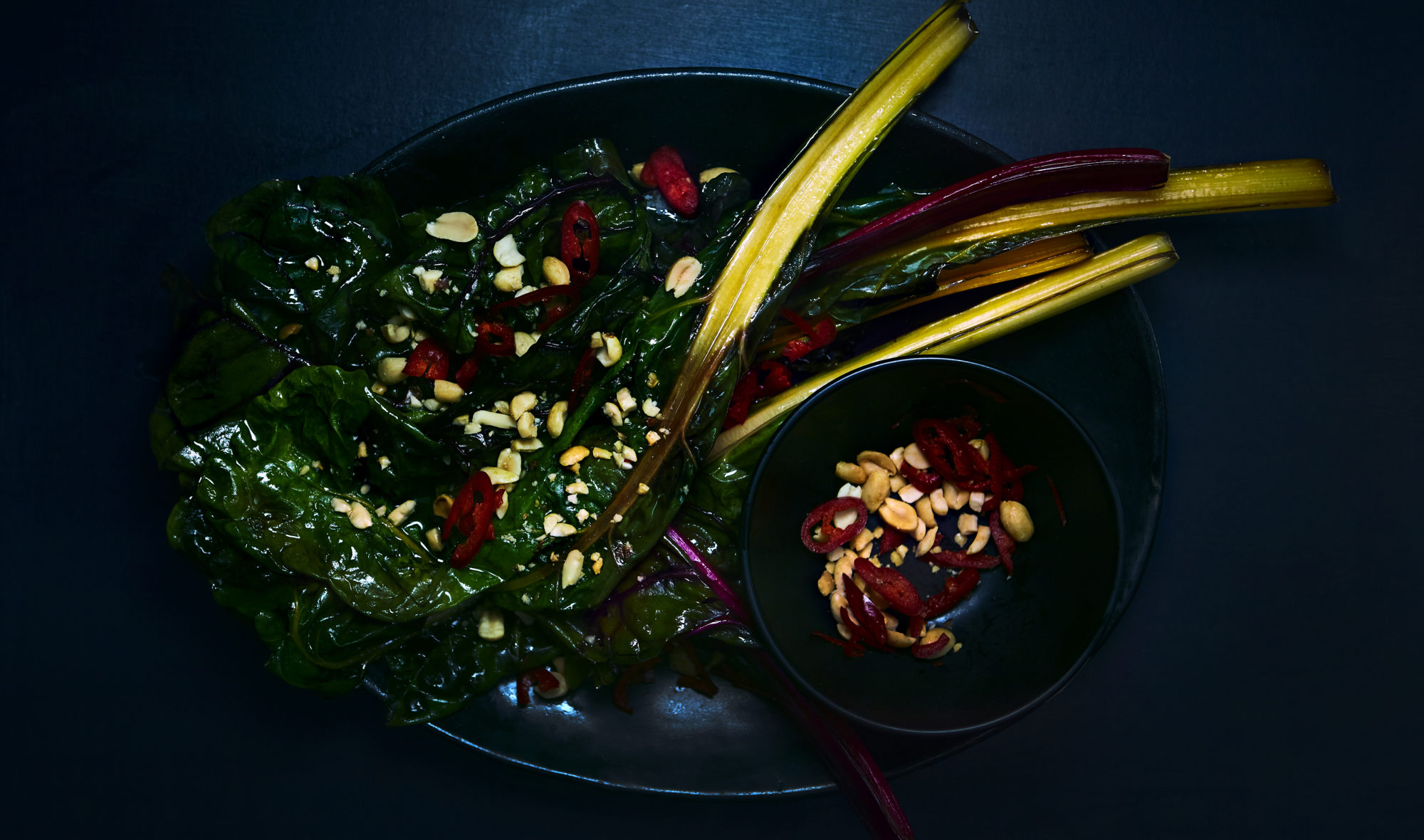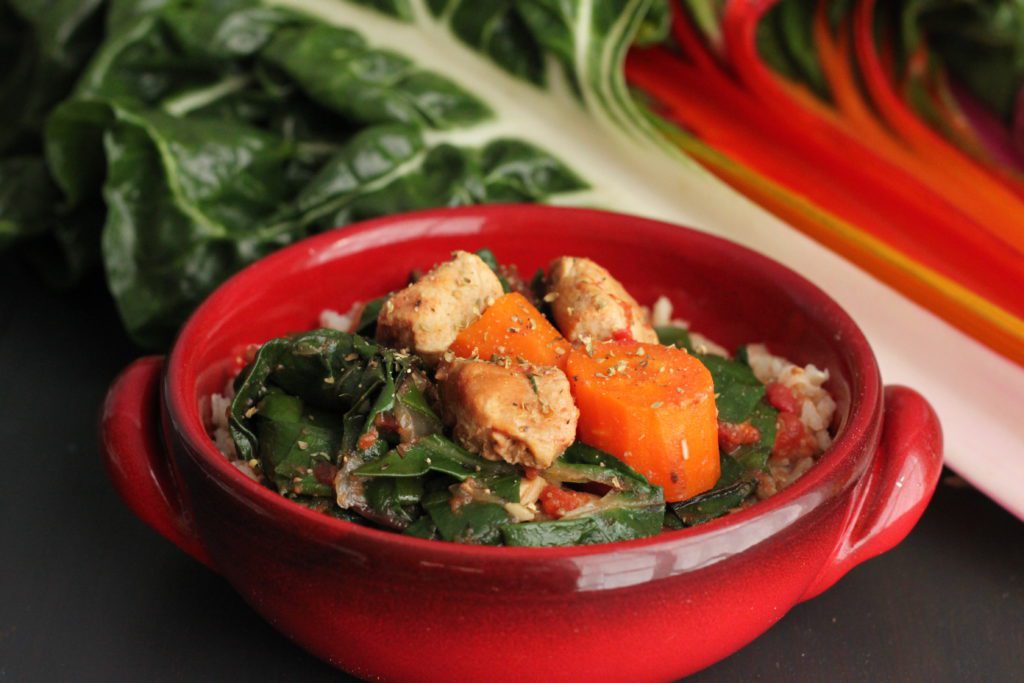
📣 PN Level 2 NOW OPEN: Get better client retention, results, and referrals. Save 44% + BONUS this week.

📣 PN Level 2 NOW OPEN: Get better client retention, results, and referrals. Save 44% + BONUS this week.

Swiss chard is a leafy green vegetable that is genetic cousins to beets, spinach, and quinoa. Swiss chard has large, glossy leaves with colorful stalks, and tastes earthy and green. It is an excellent source of vitamin K, and a good source of vitamin A, magnesium, manganese, and copper. Swiss chard may be more nutritious when cooked.
Swiss chard, which is a member of the chenopod family, is a highly nutritious dark leafy green vegetable. Other well-known chenopods include beets, spinach, and quinoa.
The most mysterious thing about Swiss chard is its name. It’s not native to Switzerland, nor is it even commonly cultivated there. Instead, it is native to Mediterranean regions, although because it tolerates a wide range of temperatures, it is grown in many climates around the world.
Speaking of names, in South Africa, Swiss chard goes simply by “spinach”. More mystery.
Swiss chard has large, glossy, rippled leaves with brightly contrasting stalks, which vein throughout the leaf. Stalks can be found in ranging shades of white, yellow, pink, and red. Leaves are typically dark green, although they may also be purplish.
Swiss chard has an earthy, mineral taste, similar to spinach. It is slightly bitter, although its bitterness decreases when cooked.
One cup of boiled, drained Swiss chard (about 175g) has 35 calories, 3.3g protein, 7.2g of carbohydrates, 3.7g fiber, 1.9g sugar, and 0.1g of fats. Swiss chard is an excellent source of vitamin K, and a good source of vitamin A, magnesium, manganese, and copper. In its raw form, it is a good source of vitamin C.
Note that the above values are for cooked Swiss chard. Like many leafy greens, Swiss chard shrinks drastically when cooked, so 1 cup of cooked Swiss chard will contain much more nutrition than 1 cup of raw Swiss chard.
The other thing to mention in comparing cooked to raw Swiss chard is the presence of oxalic acid. Oxalic acid is a compound found in many leafy green vegetables that may inhibit the absorption of minerals during digestion. Cooking vegetables reduces their oxalic acid content, so cooked Swiss chard is not only more nutrient dense by volume, but its minerals may also be more absorbable.
Swiss chard is often sold in secured bunches. Select plants whose leaves are glossy, firm, and green, with stalks that are sturdy and relatively unblemished. Wilted leaves, holes in the leaves, or floppy stalks are signs that Swiss chard is past its prime.
Here’s a great way to prolong the fridge life of Swiss chard after purchasing:
With a sharp knife, remove the very bottom portion of the stalks. Place the stalks in a glass of water, as you would a bouquet of flowers, and store in the fridge. Storing Swiss chard thusly will prevent wilting and preserve freshness for up to five days.
If you come into an unreasonable bounty of Swiss chard, you can blanch them and then freeze them for up to six months.
The simplest way to cook Swiss chard is to either steam it or water-fry it.
To steam, bring water to a boil in a pot and place leaves in a steamer basket. Steam until wilted and bright green (about five minutes), and then remove the basket and drain.
To water-fry, place the leaves in a pan over medium-high heat and add just enough water to prevent the Swiss chard from scorching or sticking to the pan. Once again, the Swiss chard will be ready when it has wilted and turned bright green.
Cooked Swiss chard is delicious with a little bit of butter or olive oil, a pinch of salt, and a bit of minced garlic.
Swiss chard may also be consumed raw. If you choose to eat it raw, cutting it in very fine strips will make it easier to chew, as it can be quite fibrous. Mix in salads for a bold green flavor.

An easy slow cooker meal with minimal ingredients often found around the house makes this meal a staple – and you’ll have a well-rounded meal (with veggies included) ready for you when you get home!
Prep Time: 10 minutes Cook Time: 210 minutes Yield: 2-4 servings
Heat oil in a skillet and add stew meat, onions, and garlic – brown all sides of the pork and transfer to slow cooker.
Add carrots, salt, and pepper to the slow cooker and stir in canned tomatoes and balsamic vinegar.
Cook on high for 3 ½ – 4 hours (or low for 7 – 8 hours) until meat and carrots are tender.
When it’s about 20 – 30 minutes away from being ready to eat – remove the stems from the swiss chard and chop into large chunks (if using the stems, add them to the slow cooker earlier in the process). Add the swiss chard and the oregano to the crockpot and cook another 20 – 30 minutes until wilted. If you cooked it on low, turn it to high for the last 20 – 30 minutes.
Serve over brown rice or wholegrain pasta – or eat as is – garnish with a bit of black pepper.
Precision Nutrition’s Encyclopedia of Food expands every single month as we highlight new foods and showcase beautiful food photography. If you’d like to stay up to date, simply click this link. From there, we’ll send you a FREE copy of our recipe book. We’ll also let you know when new and delicious foods are added to the site.
Swiss chard is a leafy green vegetable that is genetic cousins to beets, spinach, and quinoa. Swiss chard has large, glossy leaves with colorful stalks, and tastes earthy and green. It is an excellent source of vitamin K, and a good source of vitamin A, magnesium, manganese, and copper. Swiss chard may be more nutritious when cooked.